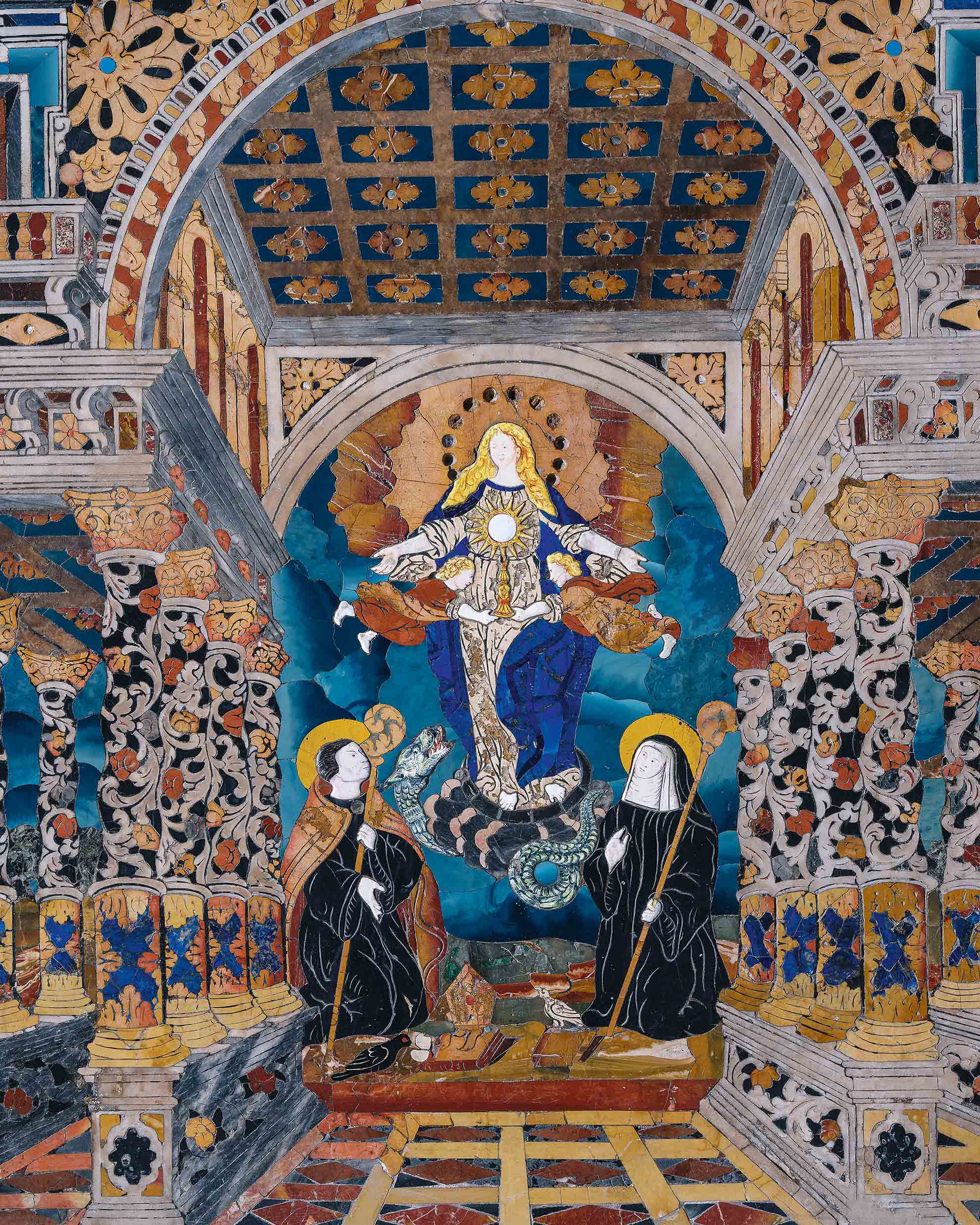
The Technicolor Marble of Sicily
KING SOLOMON’S COLUMNS
Giorgio VillaniWhile a priest may have worn a chasuble, cope, or surplice, altars too had their traditional vestments: in Italian the paliotto, from Latin pallium, or cloak. In English, an antependium, or altar frontal. Depending on the era, they could be movable or fixed, consisting of embroidered drapery, coffers of gold and silver, or glazed plaster painted as faux marble; but the five antependiums of Palermo’s church of the Immaculate Conception were all made of marble artistically inset with genuine and semiprecious stones from multiple, often distant quarries. They depict architectural settings where the dominant motif is the helical column, also known as the Solomonic column because, the sages tell us, it was first used in Jerusalem, in the temple built at King Solomon’s behest. This is the myth of the City and the Temple, with the Altar at its core, mirrored in the twisting structure of those columns, depicted within stone orchards and gardens, amongst awnings and terraces, in brief, in the views of a luxuriant, baroque Jerusalem – at once celestial, terrestrial, and unquestionably Sicilian.






